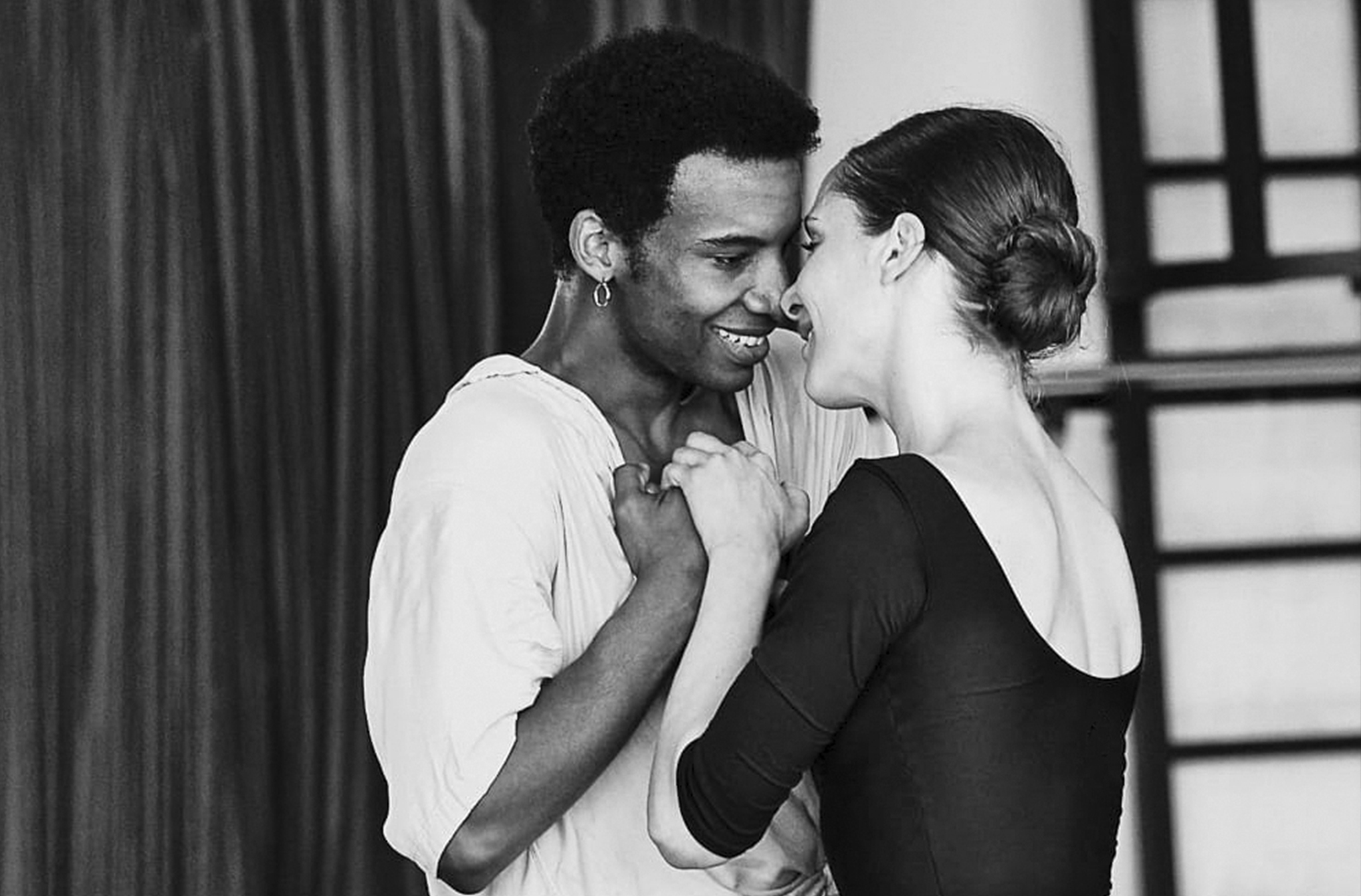Osiel Gouneo on “Romeo and Juliet,” the Art of Performance and His Advice for Success
Last month, Bayerisches Staatsballett principal Osiel Gouneo performed as Romeo in Rudolf Nureyev’s production of Romeo and Juliet with the Paris Opéra Ballet, opposite étoile Valentine Colasante.
Created in 1977, the ballet is known for its challenging, unconventional choreography, sweeping score by Prokofiev, and distinct adherence to Shakespeare’s play and the story that inspired it.
The piece seems particularly significant as the world haltingly emerges from the COVID-19 pandemic, with the work’s opulent yet gritty depiction of love amidst death and the cruelty of fate in plague-afflicted Verona.
Gouneo talked with Pointe about the role, the art of performance and what he wants to share with the next generation of dancers.
This is one of the first roles you’ve danced live, in person, since quarantine. Can you talk about the preparation for these performances and what this means to you?
I received the call around mid-March, but obviously, by the time you get the call and start preparing things, there is a negotiation to see if that really happens or not. So I talked to my coach, Judith Turos, in Munich and told her, “Listen, this came up and it’s a great opportunity. Now, we have something to work on.” Because before, we were just trying to keep ourselves in shape or motivated by doing whatever came to our minds. It was a good opportunity to channel our focus. The process became easy because the motivation was right there already. The wait until I came here to Paris, getting to know my partner for the first time, the chemistry, trying to connect with my cast, getting to make artistic decisions together—it’s just been magnificent.
For every tricky question that I might ask my coaches, they will come up with something right away. They will make me think, then I do my homework, and I try to deliver something the next day. It’s a give-and-take relationship, and it is something I’ll definitely cherish for the rest of my life.

You’ve performed this role in the past, but in the productions by John Cranko and Michael Corder. What has this experience been like for you, by comparison?
I have to say, honestly, that this is one of the hardest ballets ever created for a man. This version, specifically—the Nureyev production—is absolutely exhausting and demanding. Technically, artistically, it is a lot. So you have to keep yourself in really good shape, physically and mentally. You have to be prepared, and you have to be aware of how your body’s going to get at that point. This ballet is one of the biggest challenges that I’ve ever been through in my professional career. But I like the complexity of it and how Nureyev plays with musicality. I understand the reason why he does things. That makes it easier for me too.
In one of your earlier interviews, you mentioned being highly intentional about how you express emotion and energy according to the role you’re dancing. Can you talk a bit about how you’ve approached that in this production?
For me, it is not about playing a role. What works for me is to try to embody the characters. To be immersed into the characters’ skin. To really try to feel what that person feels like. To ask as many questions as I can. In the ballet world, most of the time, we are not used to asking that many questions, because often, people just focus on the technicality of it. I grew up already knowing that, in a theater, more than 60 or 70 percent of the people watching the show know nothing about technique. Everybody knows about feelings or interpretations, right? So that’s what I go for. For me, that’s the most important part of the process, so that by the time I’m physically tired, I can at least get that part out.
We are human. Many things can happen in a live performance, but what people will actually remember is exactly what you gave. Also, the preparation. It comes across through a hand, through a look—these are things that, with time, I’ve been developing and trying to understand a little bit more. I also watch a lot of actors—how they play roles, how they do things—so I can try to relate in my career and in my approaches, as well. It’s a never-ending process for me, which is what I like the most.

You’ve talked about—and demonstrated—having a hunger to learn and push yourself to try new things. How do these qualities factor into the video series on jumps and dedication that you’ve just created with Dance-Masterclass?
It was exciting. When I was [approached about Dance-Masterclass by] a friend, I was like, “I don’t know. What am I going to say?” And then I started thinking, “Well, we’ve been going down a long, bumpy road [due to the pandemic]. So, I think there are one or two things to say that maybe people can relate to or learn from.”
I also [drew from] something that I usually do, which is the law of attraction—of driving things with your mind and your thoughts and your heart, and the things will come.
For example, before the call from the Paris Opéra, I was trying to keep myself prepared for any opportunity that would come. And it came, and I was ready for it. That’s something that I exercise every day.

What do you want the next generation of dancers to learn from you?
To really care. To try, always, to get a bit on top of yourself. Every day a little bit more, a little bit more. Because that’s what is going to save the art form. The better an artist you become—artist, not technician—the better the art form is going to be. Ask as many questions as you can to prepare a role. If there is no background story, at least know what you’re doing, how you’re doing it, what the style is. Always continue the evolution of movement. This is something that I try to do.
Most dancers, especially young generations now, do focus on technique. Which I appreciate—the precision and pyrotechnics. We all love to see that, but I always say that once you start getting to a certain age, your body won’t be able to continue to do the same things you used to do when you were 21. So what are you going to do? Are you an artist, or are you just somebody that does tricks? That’s an issue for me. That’s why I try to keep myself as interested and meticulous as possible when it comes to a role.
Also, be careful where you put your focus. And the very, very, very important thing—for all generations, younger and older—is that when you’re in a company, the best thing is to get along with everybody, to work together, make the company big as a team, and have everybody bringing each other up. This is how companies go further. Get along with your team. If you go down this road, you will be lucky by having 60 or 65 or 170 members of a family that will have your back, and you will do the same for them.






